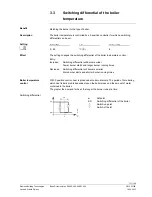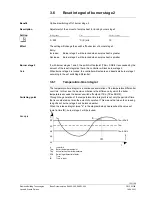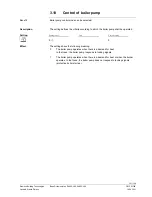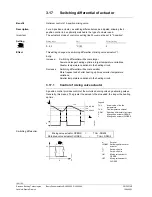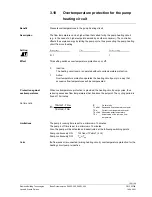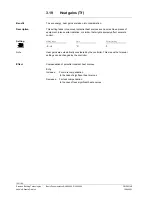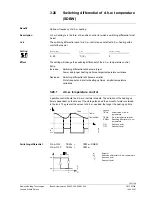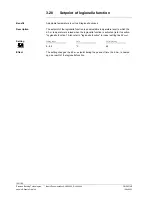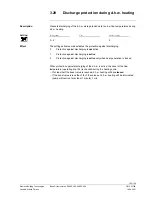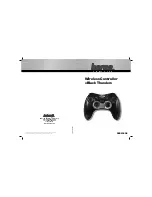
144/184
Siemens Building Technologies
Basic Dokumentation RVA63.280, RVA53.280
CE1P2374E
Landis & Staefa Division
19.04.2001
3.13
Constant for quick setback and optimum
start control (KON)
Making use of the building’s thermal storage capacity.
Quick setback is dependent on whether or not a room temperature sensor is used.
Therefore, we speak of quick setback with or without room influence.
This setting is active only if no room sensor is used.
Setting range
Unit
Factory setting
0...20
-
2
The duration of quick setback and the forward shift will be changed.
Entry:
Increase:
Longer setback and forward shift times.
For heavy and well insulated buildings that cool down slowly and that
require longer heating up times.
Decrease:
Shorter setback and forward shift times.
For light and poorly insulated buildings that cool down quickly and that
require shorter heating up times.
3.13.1
Quick setback without room influence
Quick setback is started as soon as a change to a lower room temperature setpoint
takes place (e.g. switching times in automatic mode).
The heating circuit pump will be deactivated until the quick setback time has elapsed,
which is generated from setting 32
OEM
, the composite outside temperature and the
room temperature setpoint change.
The example applies to a setpoint step change of 4°C (e.g. TRw from 20 to 16 °C):
Setting on line 32
OEM
TAgem
0
4
8
12
15
20
- 20
0
0
0
0
0
0
- 10
0
0,5
1
1.5
2
2.5
0
0
3
6
9
11
15
+10
0
5
11
15 (16,5)
15 (21)
15 (27)
Values in hours
If a room sensor is connected, the quick setback time will not be generated from this
setting. Also refer to “quick setback with room temperature influence” in Index.
3.13.2
Optimum start control without influence
Also refer to "optimum start control" in Index.
Benefit
Description
Important
Setting
Effect
Example
Note


